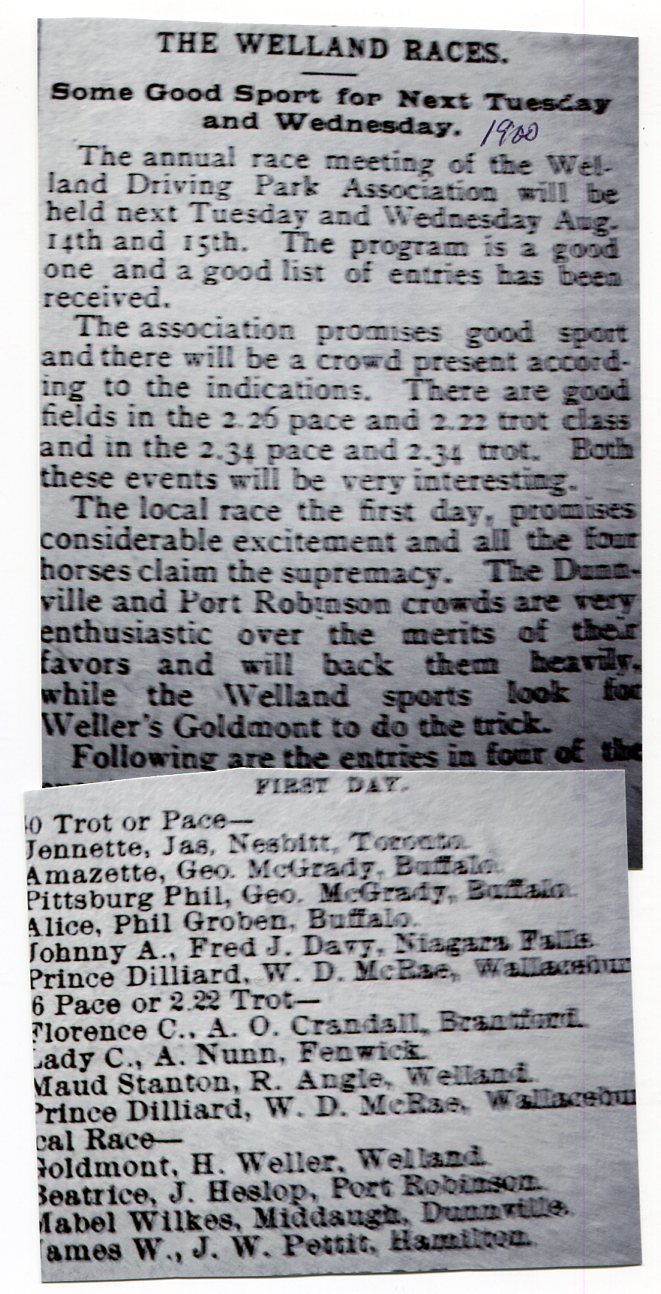welland driving park 1900-513

In Dr. Smith’s Dental Laboratory,
Welland
About eight o’clock on Friday evening an explosion occurred in the dental office of Dr. W.C. Smith, West Main street, Welland, during his temporary absence. The explosion was followed by fire and Mrs. Charles Seeger, who resides in the same building, gave the alarm. The fire bell rang out. Harry Moore hustled for the fire extinguisher, and hose carts Nos. 2 and 3 were quickly upon the scene, but before any of them arrived, the fire had been put out.
The blaze was in the Doctor’s laboratory, and Charles Hagar, a member of the Welland Fire Co., and another, broke in the window glass and extinguished the flames with a lawn hose.
The fire was confined to the laboratory, and the damage to the building was very slight, the burning of a few shelves being about its extent. The damage to Dr. Smith’s stock was quite considerable, probably $200, his dental supplies on four shelves being entirely destroyed. This was insured.
The fire would seem to have been caused by escaping gas. A vulcanizer was in operation in the laboratory. To vulcanize or harden rubber, heat is necessary and in this case it was supplied by a small gas jet underneath the vulcanizer. A time regulator is part of the apparatus, and shuts off the gas when the time necessary for vulcanization has expired, viz: two hours. A vulcanizer, therefore, would be left in operation like a tea kettle on the stove, only instead of boiling indefinitely; it would shut off automatically at the proper time. The explosion must have occurred just before the time arrived, for when the fire had been put out, Dr. Smith found that the regulator had already shut off the gas, and that the rubber plate had been hardened sufficiently, and neither it nor the apparatus was damaged in the least. Not even was a clock quite close to it knocked off its little shelf.
By touching a match around the fixtures an escape of gas can be readily detected and as the laboratory is small and close, the theory is that the escaping gas when it gathered in sufficient quantities was set on fire by the flame underneath the vulcanizer.
People’s Press
1 September 1900
Fire: 31 August 1900